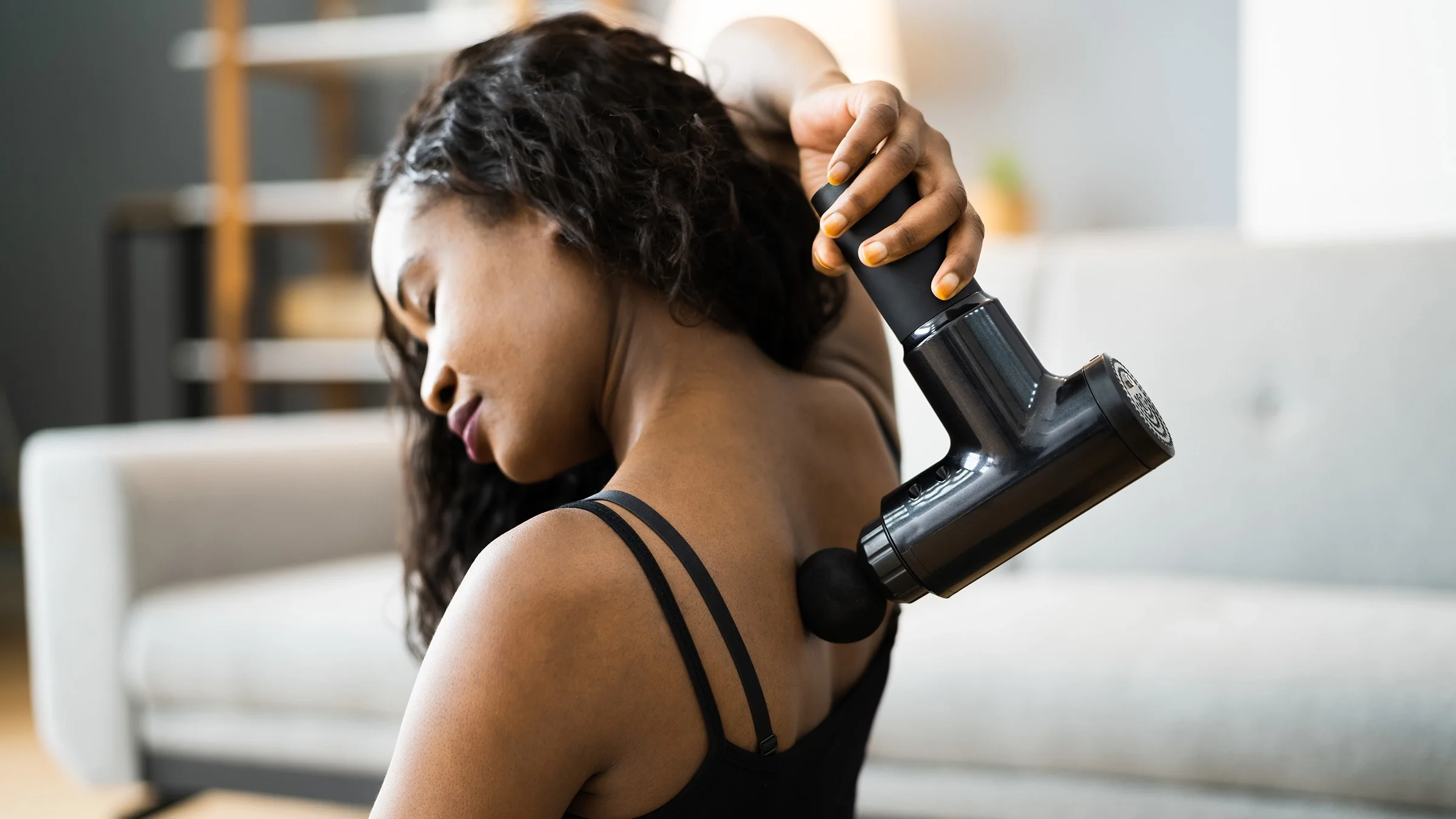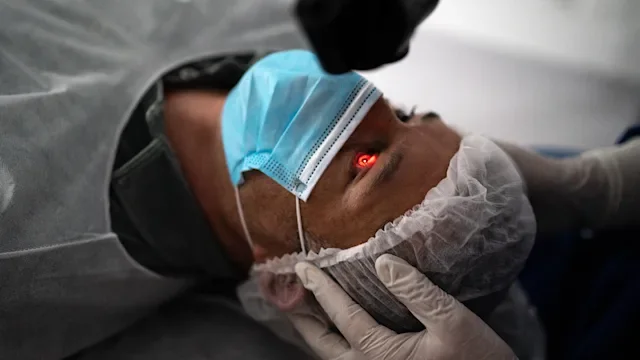Key takeaways:
A massage gun is a device that may ease muscle tension.
Money in your health savings account (HSA) and flexible spending account (FSA) may be used to pay for percussion massage guns like a Theragun if they’re used for medical purposes.
Contact your HSA or FSA provider to confirm if your purchases are a qualified expense. You may need a letter of medical necessity to pay for your massage gun with your tax-advantaged account.
If you’re looking to reduce muscle tension or reduce muscle soreness at home, you’ve probably considered purchasing a massage gun like the Theragun. Massage guns are designed to increase your blood flow and relax your muscles through deep tissue massage. You can use a Theragun 2 to 3 times per day for up to 15 minutes per session.
The global massage gun market is projected to reach $3.7 billion by 2035 as people seek out portable wellness devices. Depending on the model you choose and features offered, massage guns can cost hundreds of dollars. But you may be able to use money in your health savings account (HSA) or flexible spending account (FSA) to pay for this massage device if it’s used to treat a specific condition.
What is a Theragun, and what are the benefits?
A Theragun is a handheld massage device that provides percussion massage treatment. This deep-muscle therapy applies local pressure to the muscles. The pressure and stimulation from vibration to the treatment center increases blood flow. It also decreases tension in the muscles. Some people who’ve used a Theragun have also reported:
Better sleep
Decreased lactic acid
Hydrated muscle tissue
Increased circulation
Improved flexibility
Relieved stress
Search and compare options
How much does a massage gun cost?
Massage guns can cost anywhere from $150 for the most basic model to $650. Prices depend on the following:
Brand
Model
Features
Technology
Durability
Weight
Is a Theragun or another massage gun HSA or FSA approved?
You may be able to use HSA or FSA money to pay for a massage gun. It’s important to contact your HSA or FSA provider before you purchase a massage gun. Your account provider needs to approve the Theragun as a qualified expense for it to be eligible for reimbursement.
A Theragun or another massage gun must be used for medical purposes to qualify as an eligible expense. If you are purchasing a massage gun for relaxation or your general health, it typically won’t qualify as an HSA- or FSA-eligible expense.
If your plan does not list Theragun as an eligible expense on its website, don’t worry. You may still qualify to purchase your device with your HSA or FSA if you have a letter of medical necessity from your healthcare professional. This letter will make your Theragun a qualified medical expense. It’s important to confirm the documentation requirements with your FSA or HSA plan provider before proceeding with your purchase.
What are the rules for qualified medical expenses?
Qualified medical expenses relieve or prevent physical disability or illness. This includes preventive care but also treatment of a specific condition or ailment. Expenses for the benefit of general health are not qualified medical expenses. Diagnosis, cure, and treatment are all included in medical expenses.
Qualified medical expenses: You might be surprised to learn that you can use your HSA to pay for these qualified medical expenses.
Do you have a flexible spending account (FSA)? Learn how FSAs work to avoid losing any unused funds.
Make the most of your health savings account (HSA): Here are some HSA benefits that you can take advantage of.
For example: Let’s say you injured your shoulder in a car crash. If your healthcare professional recommends a Theragun to relieve muscle tension from your injury, it may qualify as a medical expense as long as you follow all the rules required to receive reimbursement from your HSA or FSA provider.
Not all healthcare expenses qualify as an HSA- or FSA-eligible expense. To determine if an expense will qualify, start by asking yourself three questions:
Does this relieve physical or mental illness?
Is this beneficial only for my general health?
Do I have proof that this expense is medically necessary?
Read more like this
Explore these related articles, suggested for readers like you.
IRS Publication 502 provides examples of what qualified medical expenses are. The document also gives examples of what expenses don’t qualify. When in doubt, consult a tax professional. You will face a 20% penalty on your taxes if you spend HSA funds on something other than qualified expenses. You will also pay taxes on the amount of the distribution. The only way to avoid this penalty is if you are age 65 or older.
How to determine if an expense is qualified
The IRS provides guidance for HSA- and FSA-eligible expenses in Publication 969. You can also check if an item is eligible as an FSA or HSA expense by:
Reviewing your HSA or FSA provider’s website
Calling your FSA or HSA provider to confirm what expenses qualify
Your account provider will have the final say. It is always best to confirm with them that you will be reimbursed for the expense.
Do you need a letter of medical necessity for HSA or FSA approval?
A letter of medical necessity (LOMN) is not needed for HSA or FSA approval of all medical expenses. HSA and FSA plans specify certain products and services that are eligible as qualified medical expenses.
For example, some plans have treatments such as acupuncture and massage therapy already listed as an eligible expense.
If your plan does not list an item as HSA or FSA approved, you may need an LOMN from your healthcare professional. Without it, your request for reimbursement may be denied. If you need an LOMN, contact your healthcare professional. The LOMN will outline the following:
The condition that is being treated
How the recommended treatment will help that illness
The necessity of using the treatment that the healthcare professional has recommended
It is always best to check with your HSA or FSA account provider to confirm whether an LOMN is needed in your situation.
How to use your FSA or HSA to buy a massage gun
Here are a few steps you may need to take to purchase a massage gun with your tax-advantaged accounts:
Confirm eligibility: Contact your FSA or HSA account provider to confirm if the specific massage gun you want to purchase is an eligible expense.
Obtain a LOMN: If needed, schedule an appointment with your healthcare professional to obtain an LOMN. The LOMN should state why the massage gun is medically necessary.
Purchase your massage gun: Use your HSA or FSA debit card to purchase your massage gun.
Submit a reimbursement request: If you paid for your massage gun out of pocket, you can submit a reimbursement request to your HSA or FSA provider. Your provider may also need your LOMN to confirm that your massage gun was medically necessary.
Keep receipts: Maintain a copy of receipts, LOMNs, and any other relevant documents to prove that your massage gun purchase was a qualified medical expense.
The bottom line
Massage guns like the Theragun may be considered a qualified medical expense if they are used to treat a specific medical condition. If your HSA or FSA plan provider does not list massage guns on its website or in your handbook, call to confirm if the brand you want is eligible for reimbursement. Be prepared to provide a letter of medical necessity to prove that you need the massage gun for medical reasons.

Why trust our experts?



References
Future Market Insights. (2025). Global massage gun market outlook (2025 to 2035).
Internal Revenue Service. (n.d.). Publication 969 (2025), health savings accounts and other tax-favored health plans.
Internal Revenue Service. (2024). Publication 502: Medical and dental expenses.
Therabody. (n.d.). A new era of Theragun innovation is here.


















